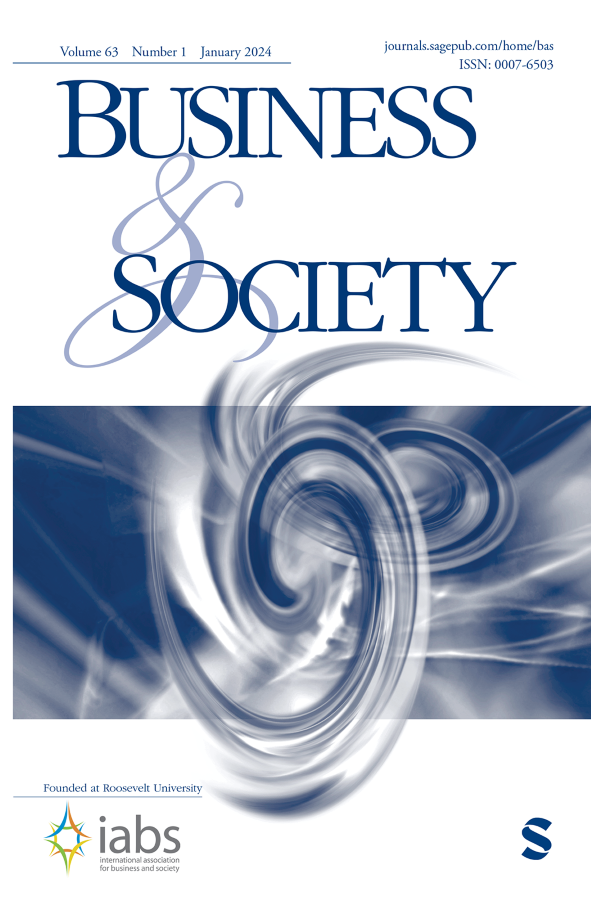站在戈夫曼的肩膀上:推进病耻感的相关研究议程
IF 5.3
3区 管理学
Q1 BUSINESS
引用次数: 2
摘要
根据Goffman对耻辱感的原始观察以及被耻辱感与支持或污名化的受众之间相互作用的后果,我们对20年来有关耻辱感的各种文献进行了回顾,以重新审视耻辱感过程的集体性质。我们发现,关于耻辱感的起源、反应、过程和结果的研究与Goffman的耻辱感的关系观存在分歧,因为他们忽视了解释(去)耻辱感过程的重要关系机制。我们从这些结论中得出结论,证明有必要将耻辱作为一种集体现象进行研究。在理解受众在互动中如何对属性进行污名化(或不污名化)的基础上,我们发展了一种关于污名化的关系视角。我们认为,为了推进污名化研究,有必要在戈夫曼的理论基础上,将污名化者(即正常人)和支持者(即智者)纳入其中;他们如何创造、维持或消除耻辱感;以及它们与被污名化(即目标)的关系。因此,我们提出了一项研究议程,将污名作为一种集体现象,从关系的角度进行理论化,提出了一种受众与污名之间关系的类型学,并确定了受众之间的关系模式。因此,我们通过关注受众(即污名化者或污名化者的支持者)的关键作用,而不是污名化的目标(即自己),为现有的污名化叙述提供了缺失的部分。本文章由计算机程序翻译,如有差异,请以英文原文为准。
Standing on the Shoulders of Goffman: Advancing a Relational Research Agenda on Stigma
Drawing from Goffman’s original observations on stigma and the consequences of interactions between the stigmatized and supportive or stigmatizing audiences, we conduct a 20-year review of the diverse literature on stigma to revisit the collective nature of stigmatization processes. We find that studies on stigma’s origins, responses, processes, and outcomes have diverged from Goffman’s relational view of stigma as they have overlooked important relational mechanisms explaining the processes of (de)stigmatization. We draw from those conclusions to justify the need to study stigma as a collective phenomenon. We develop a relational perspective on stigma based on understanding how attributes are stigmatized (or not) by audiences in their interactions. We argue that to advance stigma research, it is necessary to build on Goffman’s theory to include the stigmatizers (i.e., the normal) and supporters (i.e., the wise); how they create, sustain, or remove stigma; and how they relate to the stigmatized (i.e., the targets). Accordingly, we provide a research agenda on stigma as a collective phenomenon that theorizes a relational perspective, proposes a typology of how audiences relate to stigmatization, and identifies patterns of relations between audiences. We thus offer a missing piece to existing accounts of stigma by focusing on the key role of audiences (i.e., stigmatizers or supporters of the stigmatized) rather than on the targets of stigma (i.e., the own).
求助全文
通过发布文献求助,成功后即可免费获取论文全文。
去求助
来源期刊

Business & Society
BUSINESS-
CiteScore
14.80
自引率
11.40%
发文量
56
期刊介绍:
Business & Society publishes original research, book reviews, and dissertation abstracts relating to business ethics, business-government relations, corporate governance, corporate social performance, and environmental-management issues. Manuscripts relating to the field of business and society in general are also published. Submissions of theoretical/ conceptual work as well as empirical studies are encouraged. Business & Society is the first peer-reviewed scholarly publication devoted exclusively to the field of business and society, and it is the official journal of the International Association for Business and Society (I.A.B.S.), the only independent professional association dedicated to business and society teaching and research.
 求助内容:
求助内容: 应助结果提醒方式:
应助结果提醒方式:


